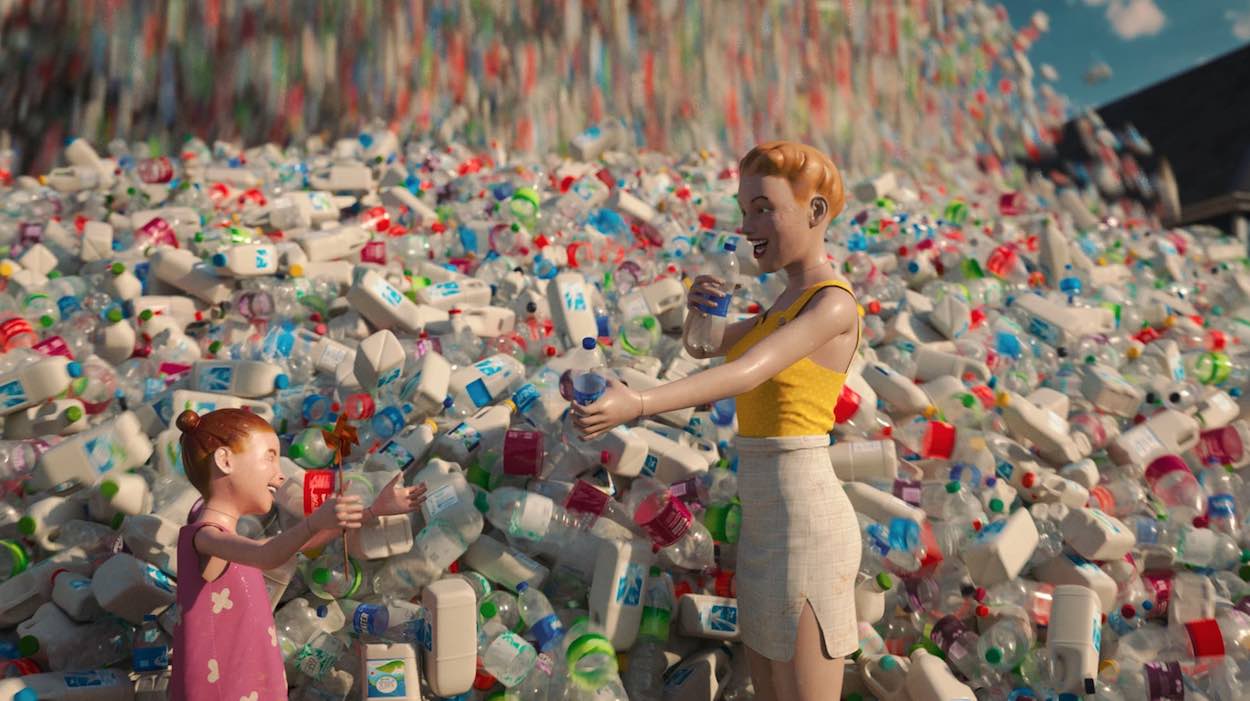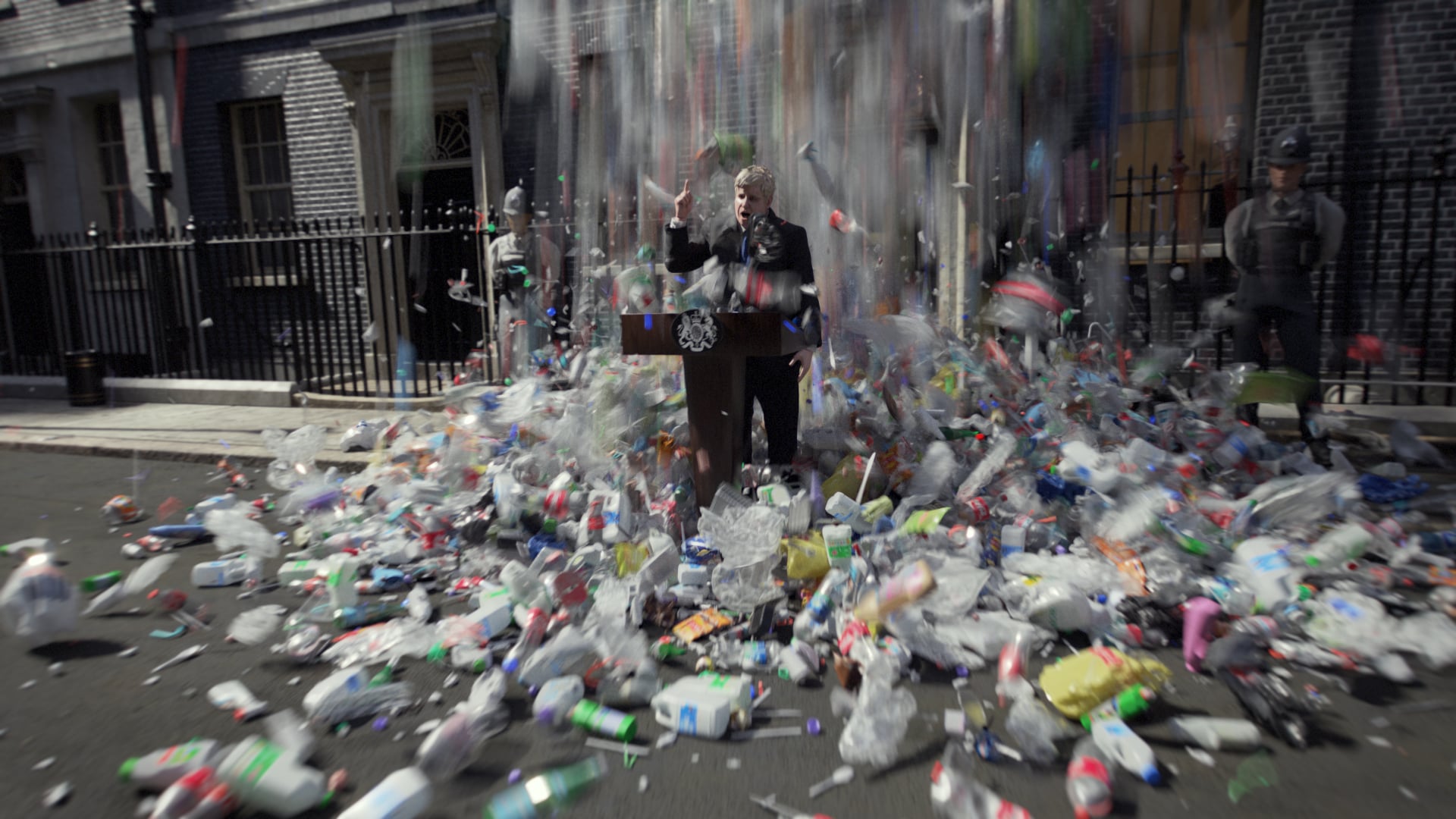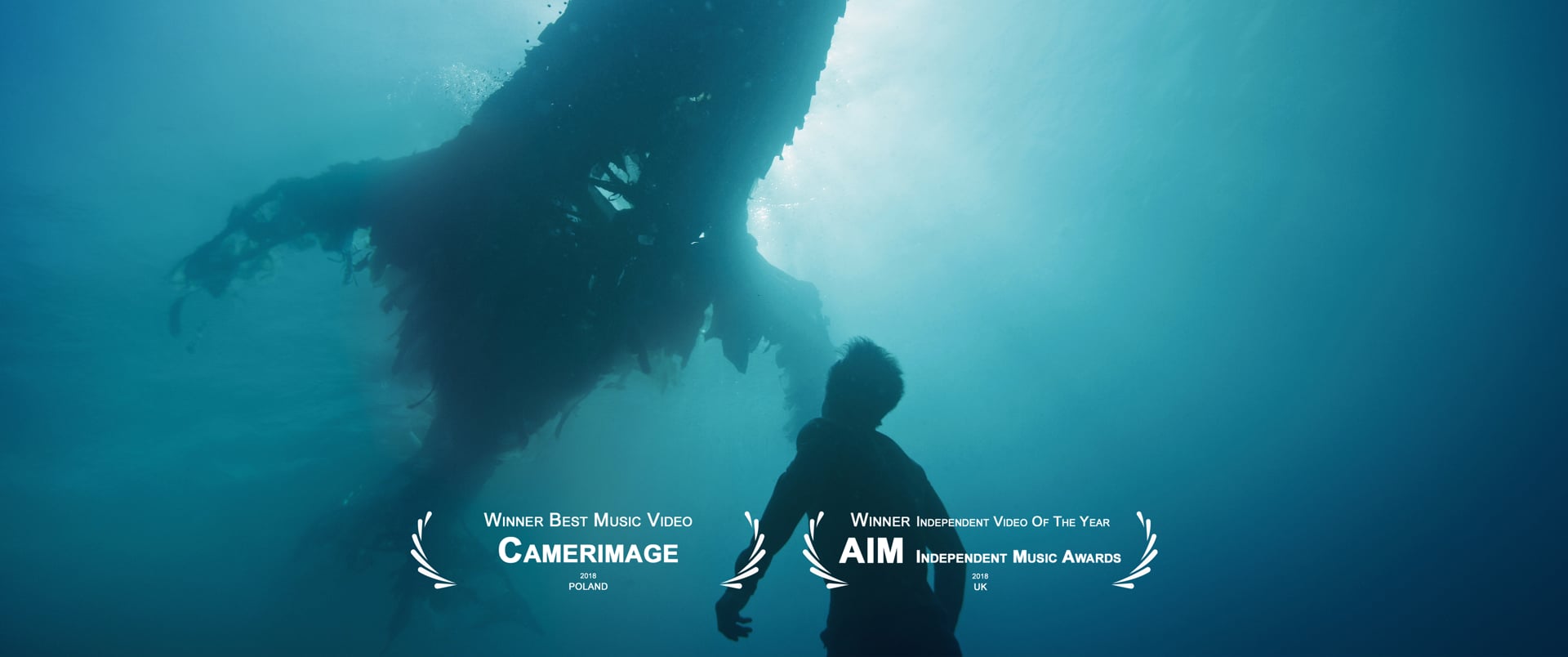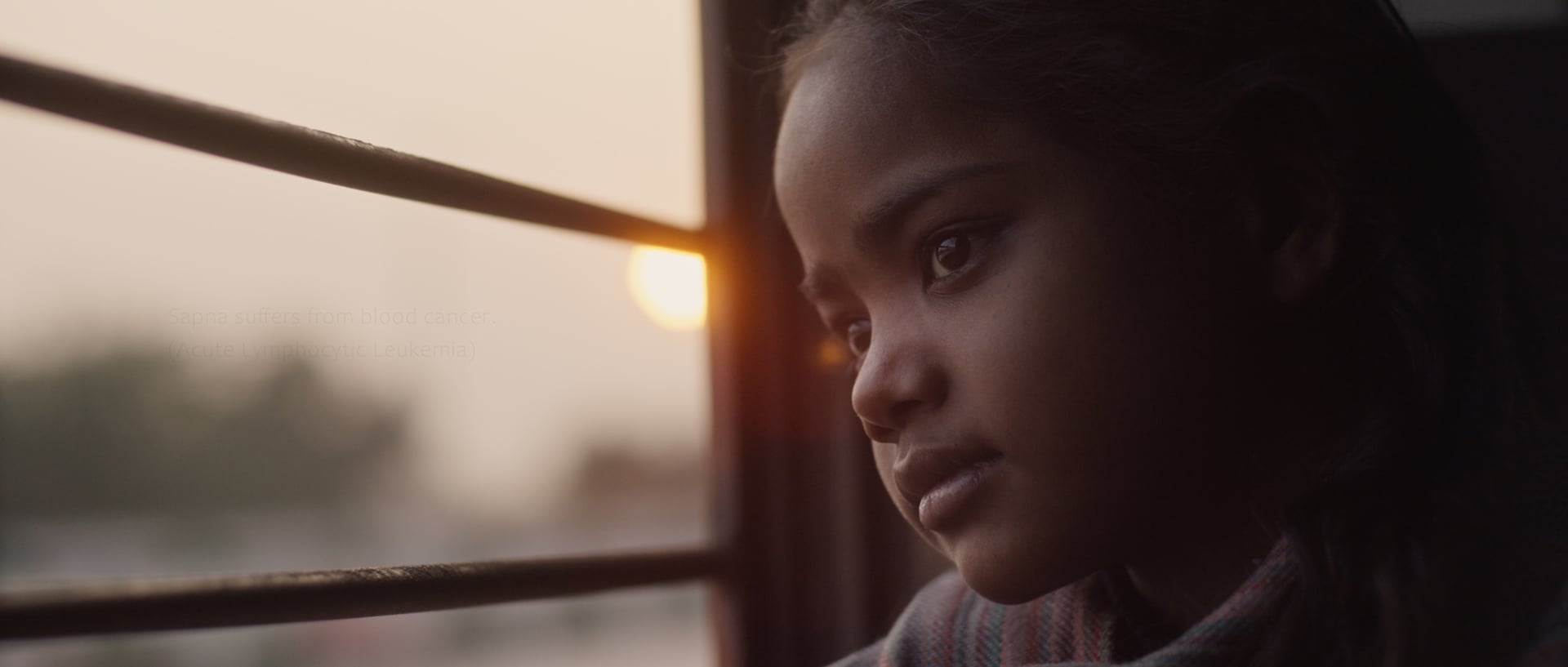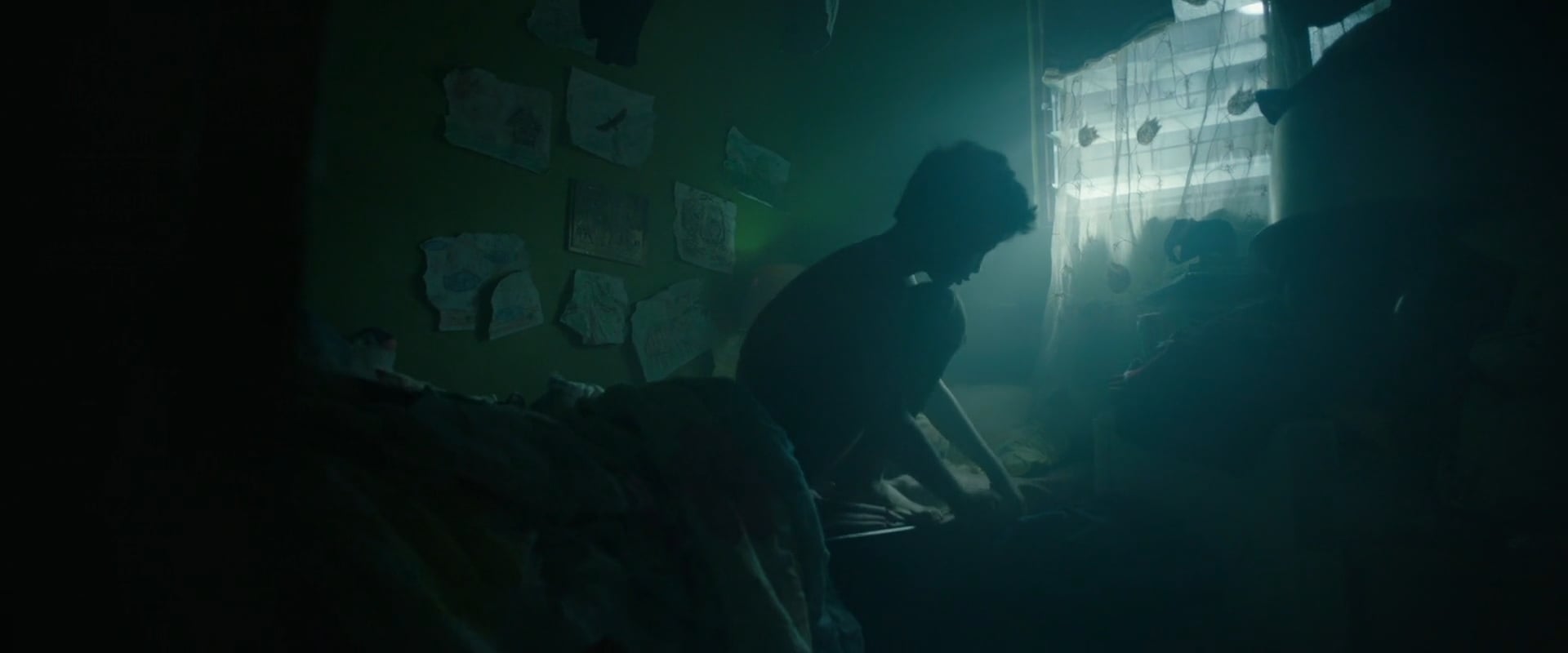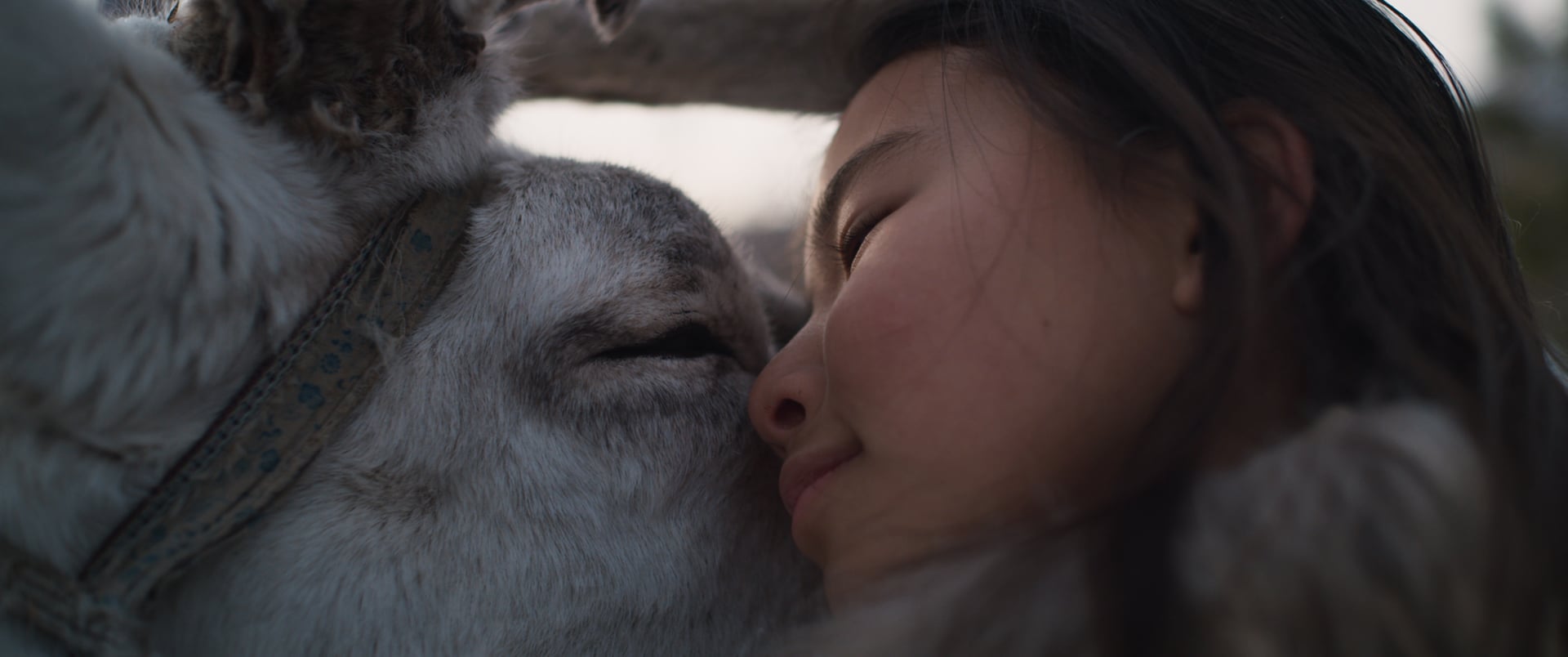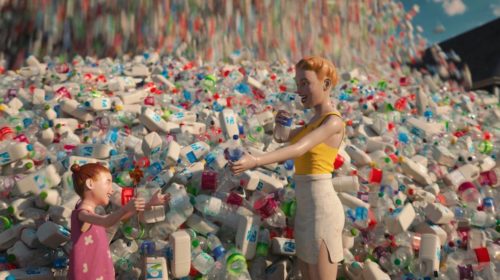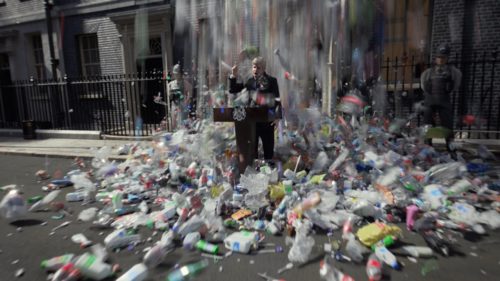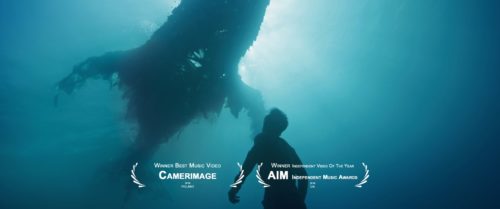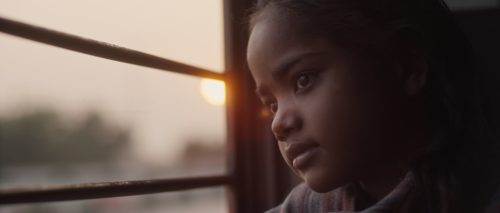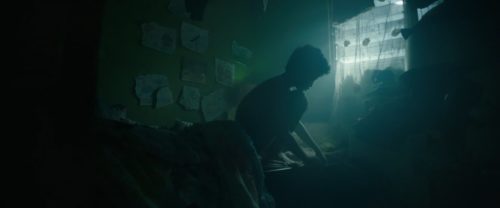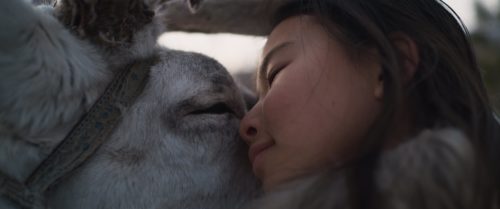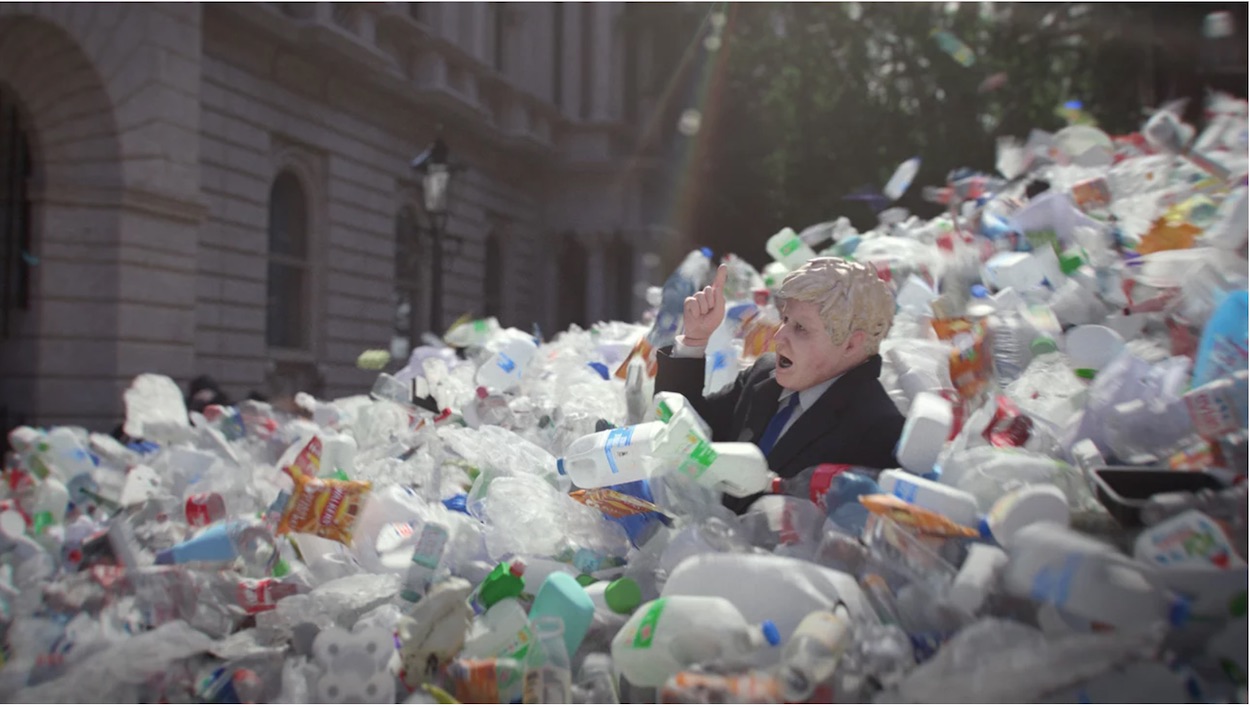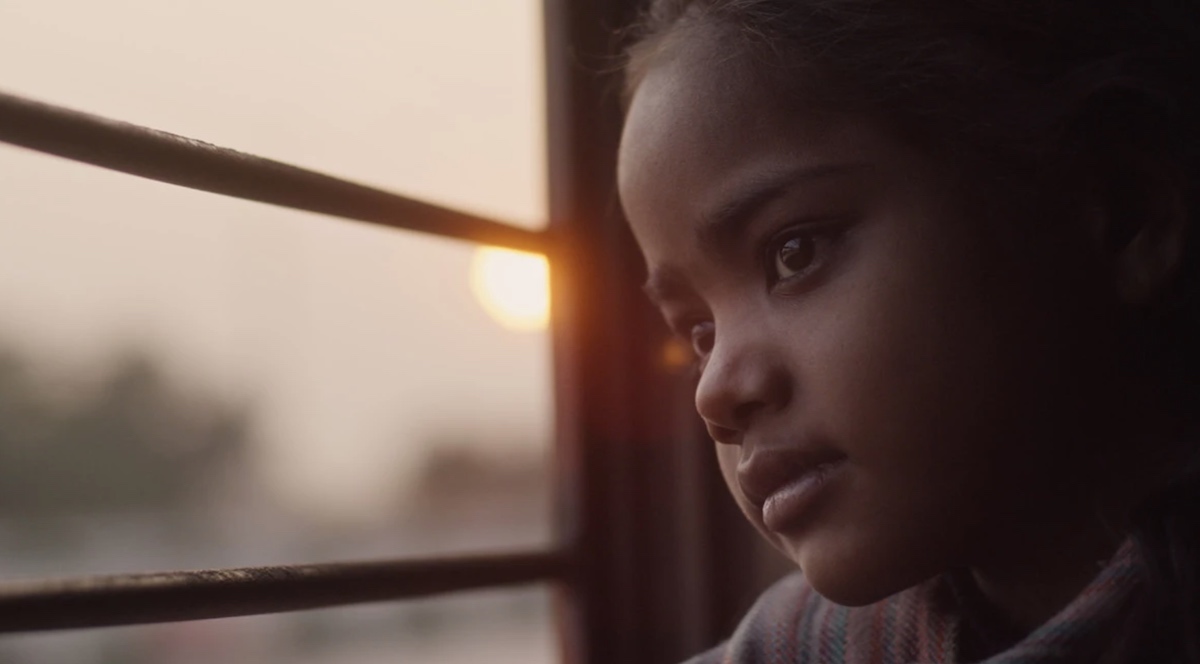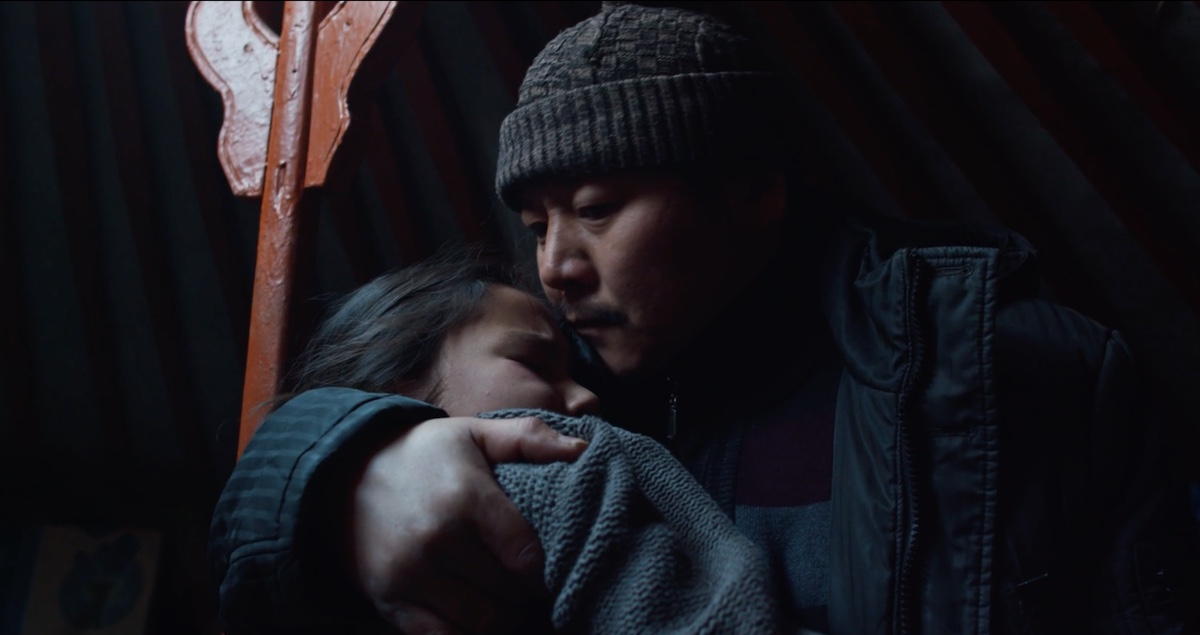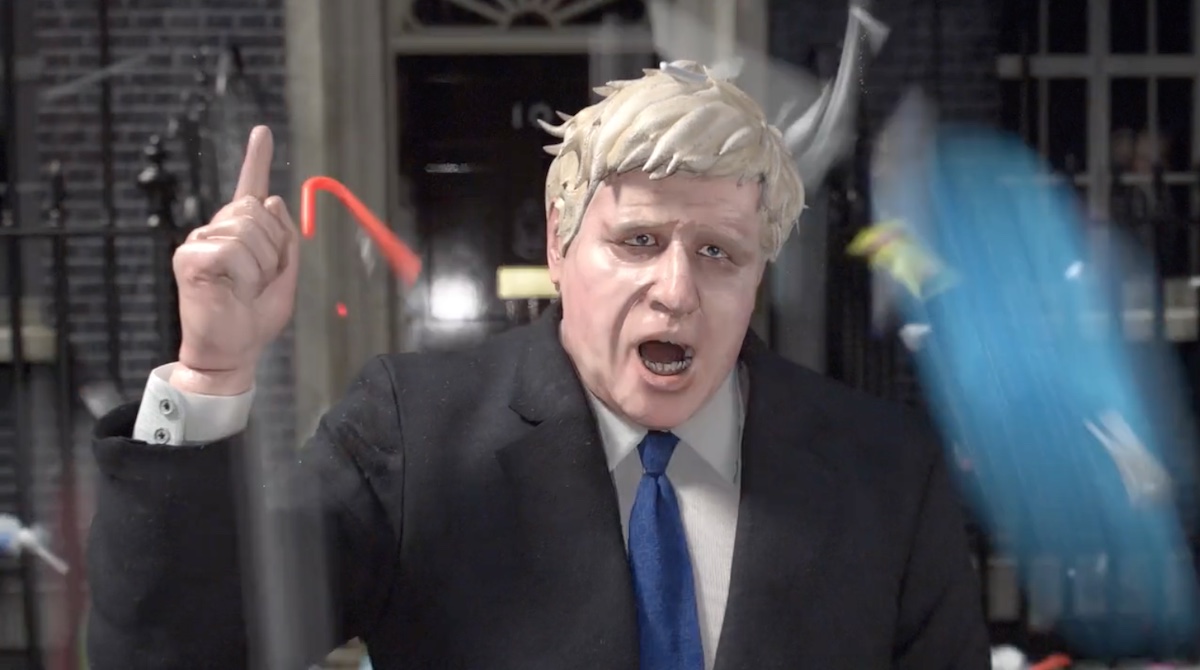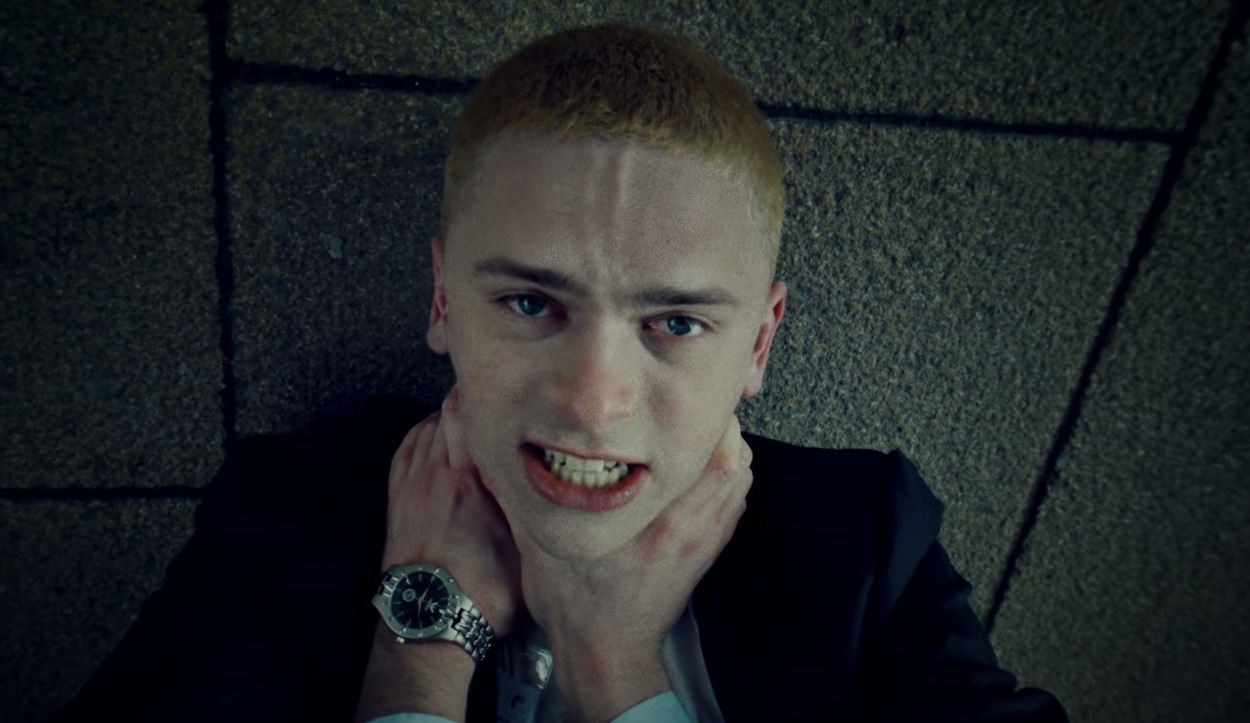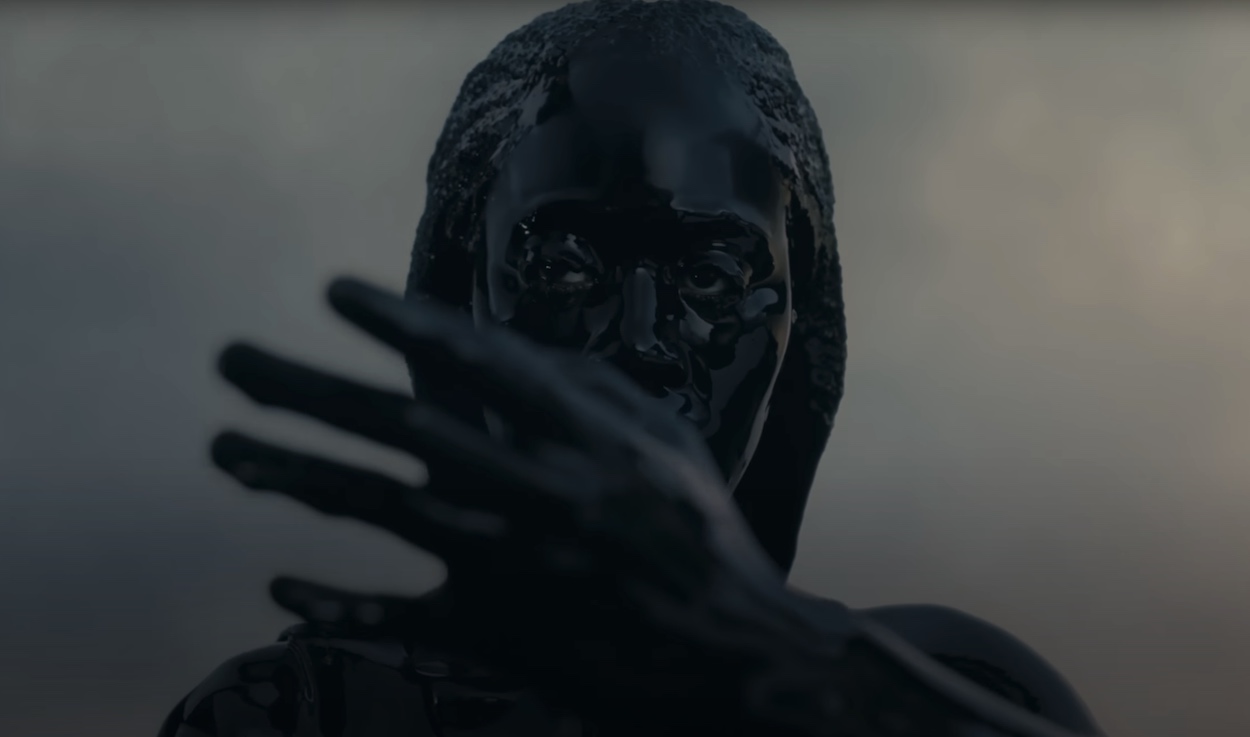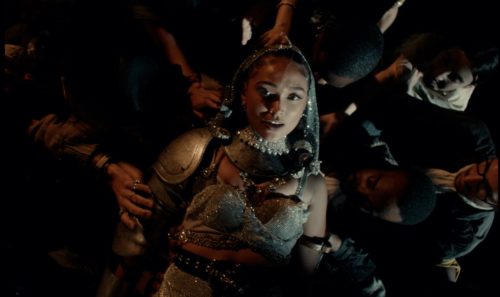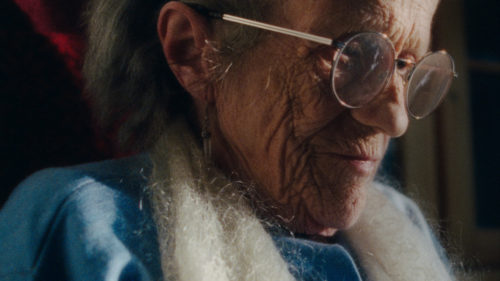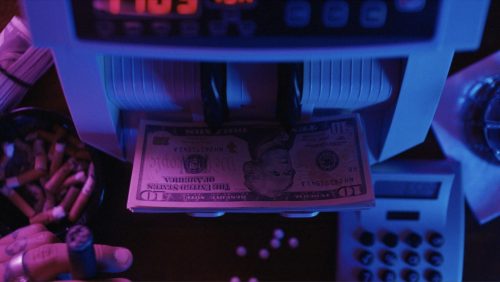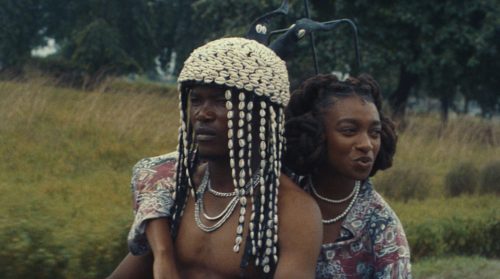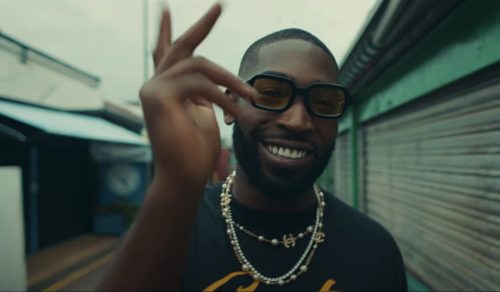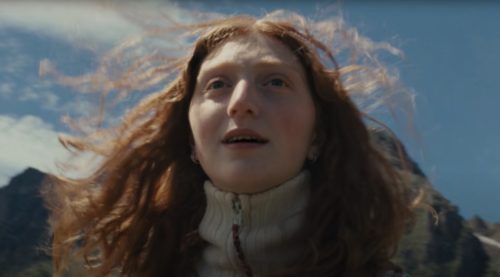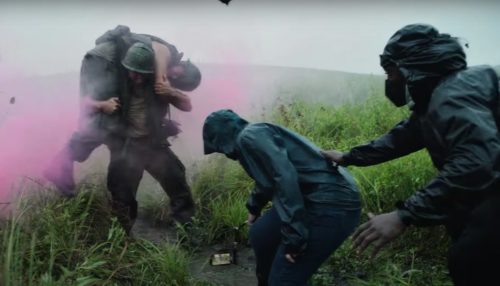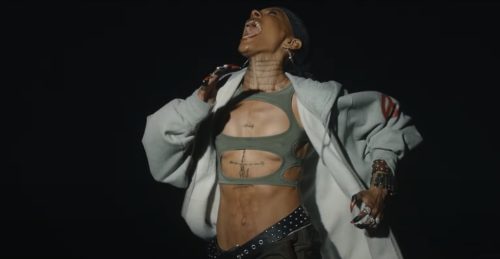Greenpeace, Wasteminster
Studio Birthplace’s work speaks of outstanding commitment and care. How would you sum up the ethos of Studio Birthplace?
We live in a time where we face a massive ecological and climate crisis, where communities are threatened and wildlife is rapidly becoming extinct. At Studio Birthplace, we believe that these are the most important stories of our time. As creative storytellers, it is our role and responsibility to create awareness and inspire positive change. We push ourselves every day to become more conscious and more informed. We try to push the creative landscape using new technologies and innovative solutions to reach audiences worldwide through the heart.
Please tell us how you both met and set up Studio Birthplace?
We met in 2008, at a visual effects school in Hollywood of all places. Sil was leading a project at the school, and Jorik walked in as a student. We became roommates and friends, and found each other in a shared passion for music and filmmaking, and a similar ethos and general attitude towards life. After our LA adventure, Sil continued to pursue his career as an independent filmmaker and Jorik started a career in visual effects at Industrial Light & Magic.
We continued to collaborate on projects and in 2017 the time was right to join forces and co-direct a project together with our friend, producer Sean Lin. The adventure of making a film is really so much more fun when shared with friends. The experience was a blast and we simply continued to make films. In our work, we started to notice a distinct thread of humanitarian and ecological themes which resonate really well with audiences. We became aware that we were using the medium of film to contribute to something bigger than entertainment: to speak up for nature and humanity. In 2019 we decided to form Studio Birthplace together with Sean, to pivot and commit ourselves to making conscious and important work.
SYML, Journey of Hope
Instead of just talking about the planet’s problems you have created action – making these films with craft and highly skilled creativity. Please tell us about your backgrounds where you learnt these skills.
We developed the ‘craft part’ of the skill over the past 15 years, starting at Gnomon school of visual effects in LA, all the way through the many independent and blockbuster projects in which we gained experience and polished our craft.
The ‘creative part’ of the skill however is not so easy to answer, as ultimately this is the result of a lifetime of gradually becoming more conscious of the world around us, our relation to it, and figuring out ways to best give expression to this as artists. We constantly try to put ourselves in front of the wave to find fresh, bold and sincere ways to bring our stories to audiences.
Sleepless, Repeat Until Death
Studio Birthplace is based in Amsterdam and SouthEast Asia with global ties – what was behind the decision to set up your global links?
After our LA adventure, Sil moved to the Netherlands and Jorik moved to Singapore. We continued to collaborate on projects everyday and established our online workflow early on. When Covid hit, we realised that absolutely nothing changed in the way that we work, as we had already been video calling and organising all of our projects online for more than a decade. The only thing was that we couldn’t travel for projects obviously. When we started our Studio we expanded on our online foundation.
From a business perspective, it made a lot of sense to operate from multiple countries, as we each bring our unique local networks. For example, we can have in person meetings with clients in Europe, while we shoot projects in Asia where we have a crew in place.
We continue to expand our global network by adding an increasingly diverse group of global creatives to the Studio. We believe that the time to collaborate is now and the 21st century makes it perfectly easy for us to do so wherever we are based.
You write your own scripts / ideas, you obviously want to create as well as execute. Where do your ideas come from and do you feel your extra skills means you can bring even more to your commissioned projects?
Telling our own stories is something that we are especially passionate about. It can be hard to push the envelope with a client that has a fixed brief or distinct CTA already in place. We believe that to stand out we have to think outside of the box. We want to be innovative, take risks and dare to be bold. Our recent film Wasteminster for Greenpeace was a perfect example of a client who was willing to trust us in a bold idea and who wasn’t afraid to take a risk.
We always try to approach commissioned projects with concepts that we really feel ourselves, and that we believe brings something refreshing to the client, even though it may step outside of the brief a bit. We are as comfortable with an open brief as with a fixed brief, but an open brief tickles our creative senses.
Greenpeace, Wasteminster
You use humour as a tool to get across devastating messages. Tell us about your creative process for making the films with plastic figures. Did you actually build the sets?
Park Village introduced us to Greenpeace, with whom we made the plastic waste film ‘Wasteminster’, and showed them a pilot film that we made, Humanity’s Impact. In this film, we already proved the core concept. During our research for several environmental films that we had done, we encountered really big and really important data in lengthy reports from NGOs, related to humanity’s impact on our planet. We wanted to make this data visible because we believe that it should be made much easier for people to understand it. This was our mission with the pilot film.
We introduced comedy because it can be a powerful tool to help tell some of the saddest stories in our time. It can allow for an easy way in with the audience and make it easier to call out the ugly side of our consumer culture. We created test-dummies that not only represent us but that also put up a mirror to us. It is easier to make fun of a plastic dummy rather than a real human, after all, it’s only a dummy.
The entire film Wasteminster was made using CG, made with our CG partners Method & Madness in Singapore. From the sets to 150 unique pieces of plastic waste, and from the characters to the trees. None of it exists outside of the computer. It was a massive undertaking that involved tremendously complex simulations and roughly 14,600 hours of render time, or 20 months, to create the final shots. Of course the CO2 emitted by our render farm was compensated for.
And you also make beautifully expressed, live action films such as the heartbreaking story of Syml. How did this film come about? Tell us about your decision to create multi format and multi platform work rather than sticking to one form of execution.
For our music video Flags for Syml we were approached by the artist who had seen some of our videos for Novo Amor. Syml, who lost a loved one to cancer, wrote a song to try and cope with the loss and brought the story of the ‘cancer train’ in India to us. The cancer train transports around 100 cancer patients daily on an 8 hour long journey to visit Acharya Tulsi Regional Cancer Treatment and Research Institute, one of the oldest and prime centres for cancer treatment in North-West India. We were immediately intrigued with this story and figured out a way to tell it.
Our expansion into multi-platform work occurred after we added educational microsites to films like Terraform and Birthplace in an attempt to contribute to real world change. We realized that film has its limits to how much we could interact and engage with audiences. We felt the desire to contribute more directly to change.
This is why we started to create mobile game Birthplace (releasing worldwide later this year) in which the player restores ecosystems – and also in the real world, and why we created an augmented reality app in which users can interact with data visualisations related to their impact on the planet on a personal level.
Novo Amor, Birthplace
Do you work closely with NGOs?
We do and we love it! Although NGOs can operate at a slower pace, they provide amazing research that we can implement in our work. There is a lot to learn from them. The client-producer relation also feels a bit different because we have the singular mission to make a positive impact, which unites us.
How do you fund your own work?
Funding our own work is challenging. We have many more concepts that we would like to execute. We try to convince NGOs, we apply for funding, and we adapt original concepts to clients if the integrity and vision and the concept can remain intact.
What are the main challenges of getting your work seen by a global audience?
Whether our work reaches a global audience or not often depends on organic growth across social media and online video platforms. This growth is usually fuelled / kickstarted by a well-known music artist or a NGO. With this initial boost, a project can gain momentum and start to fly. From our end, the challenge in reaching a global audience depends on how well we are able to capture the viewer online.
We are also sending our films to film festivals worldwide to reach a different audience.
You signed to Park Village. Greenpeace has been a great success. What attracted you to the company and are you excited about the possibilities as they have multifaceted production?
A few years ago we met with several studios in London. With Park village we simply had that instant click. We immediately felt mutual ground on an essential level of integrity and originality.
Park Village feels like a true extension of our team. We are very excited about the success of Wasteminster and the opportunities that are coming out of it with Park Village.
See Studio Birthplace’s other work and bts material here
Park Village website
Visit birthplacegame.com to learn more
Download free apps to accompany Haw Many Plastic Bottles Do We Produce
Apple App Store:
Google Play
Birthplace Game about the Rain forest:
